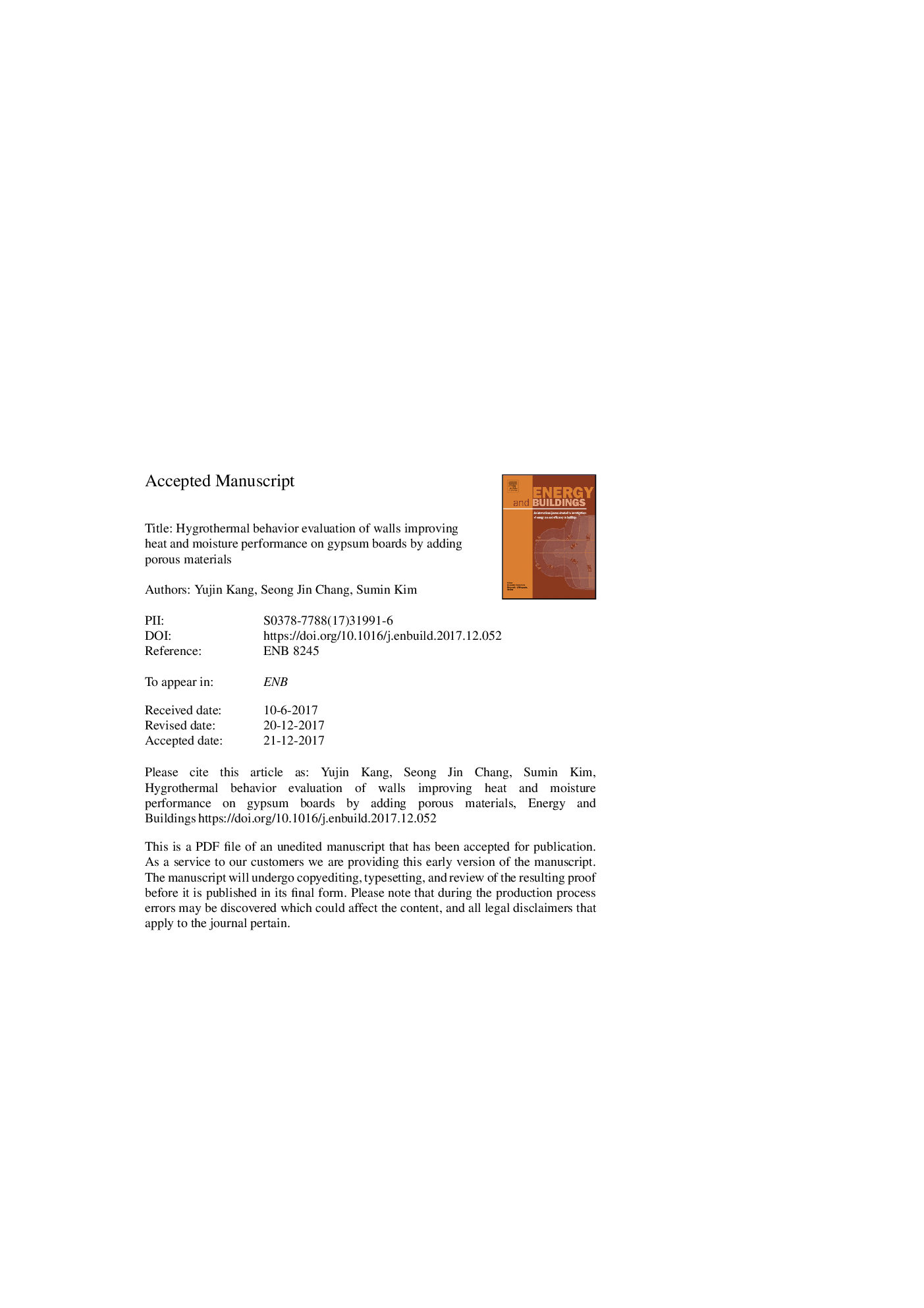| Article ID | Journal | Published Year | Pages | File Type |
|---|---|---|---|---|
| 6728757 | Energy and Buildings | 2018 | 28 Pages |
Abstract
Gypsum board as a wall and ceiling finishing material can be used to reduce building energy consumption. To optimally use gypsum board as building material, methods are needed to reduce mold and condensation that frequently found on the material and inner surfaces of the board. The influence of gypsum board on hygrothermal behavior of building needs to be confirmed first. The objective of this study was to reduce gypsum boards' thermal conductivity and improve their moisture properties. Their effect on the hygrothermal behavior and performance of buildings were then evaluated. Specifically, gypsum board was applied to a concrete wall in this study. Porous materials such as expanded vermiculite (EV), expanded perlite (EP), and three xGnP of different surface areas (C-300, C-500 and C-750) were used to improve the thermal and moisture performance of the gypsum board. Gypsum boards' density, thermal conductivity, water vapor resistance factor, and water content of gypsum board by relative humidity were then evaluated. The influence of hygrothermal behavior of walls when gypsum boards adding porous materials were used as interior finishing materials on concrete wall were then examined.
Related Topics
Physical Sciences and Engineering
Energy
Renewable Energy, Sustainability and the Environment
Authors
Yujin Kang, Seong Jin Chang, Sumin Kim,
